
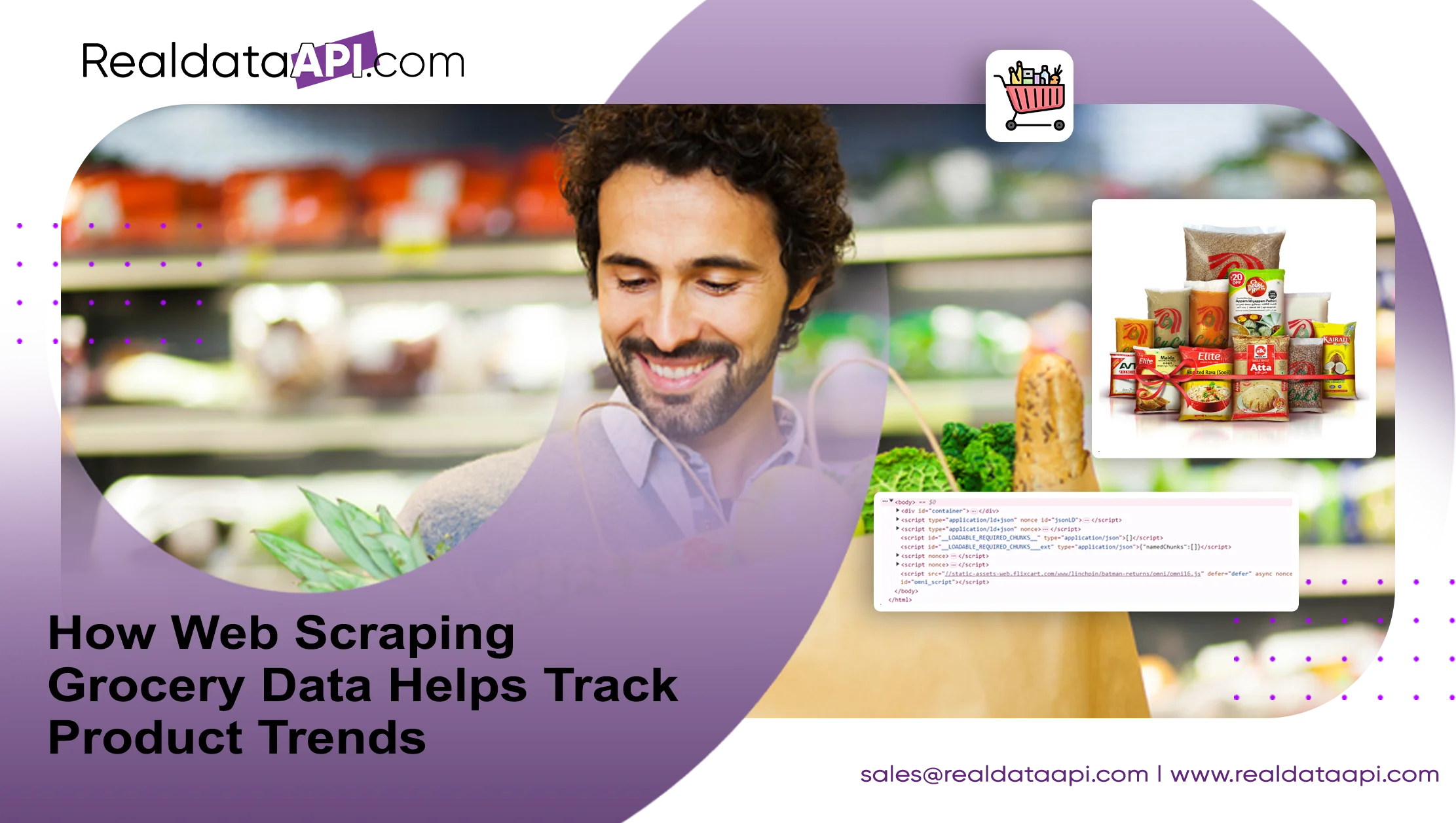
Introduction
In the rapidly evolving world of retail and e-commerce, data is the key to understanding market dynamics and consumer behavior. One of the most potent ways businesses can stay competitive is by tracking grocery product trends. Whether for price monitoring, understanding inventory fluctuations, or gauging consumer preferences, web scraping grocery data has become essential for gaining real-time insights. With the grocery industry projected to grow substantially in 2024, businesses need cutting-edge solutions like scraping Grocery API to stay ahead.
This blog will explore how scraping grocery data helps track product trends, the statistics backing up its importance in 2024, and real-world use cases showing how companies benefit from these techniques.
The Importance of Tracking Grocery Product Trends
Tracking product trends in the grocery sector is crucial for several reasons. Retailers and manufacturers can better understand what products are gaining popularity, monitor changes in pricing, and adjust their supply chains accordingly. Consumers are highly price-sensitive, and with the rise of online grocery shopping, they have more options than ever.
With the help of grocery data scraping APIs, companies can monitor:
• Popular products and categories
• Price changes and fluctuations
• Inventory availability
• Consumer demand patterns
According to Statista, the global online grocery market is expected to grow by $800 billion in 2024. With such rapid growth, the ability to scrape and analyze grocery data in real time is crucial for businesses that want to maintain a competitive edge.
Key Statistics for 2024
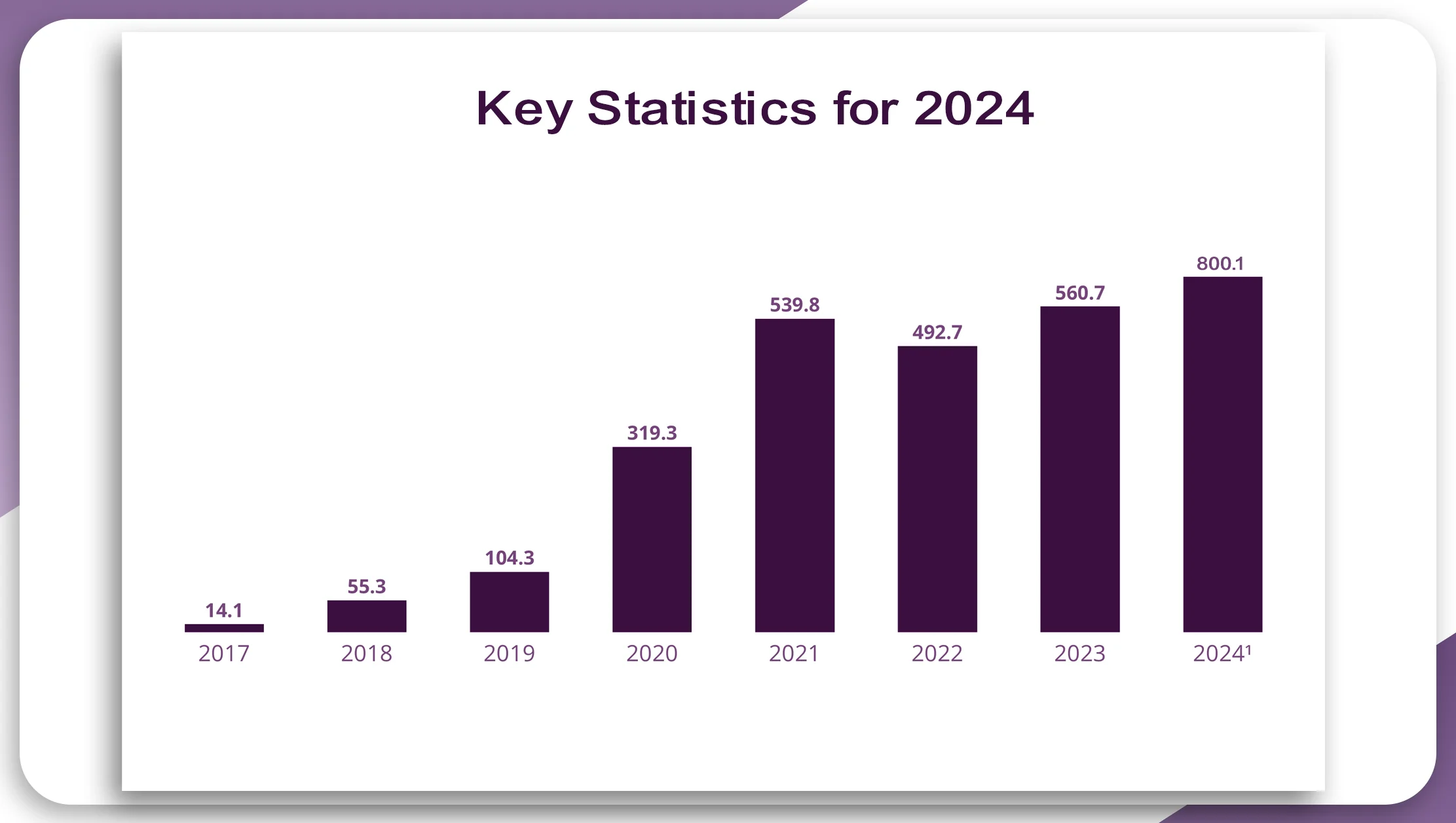
The global online grocery market is expected to reach $800 billion by the end of 2024.
Demand for online grocery delivery services has increased 30% year over year, largely due to the convenience and efficiency of online shopping.
In 2024, 40% of consumers are expected to use price comparison tools, many of which rely on grocery price scraping APIs.
Use Cases of Web Scraping Grocery Data
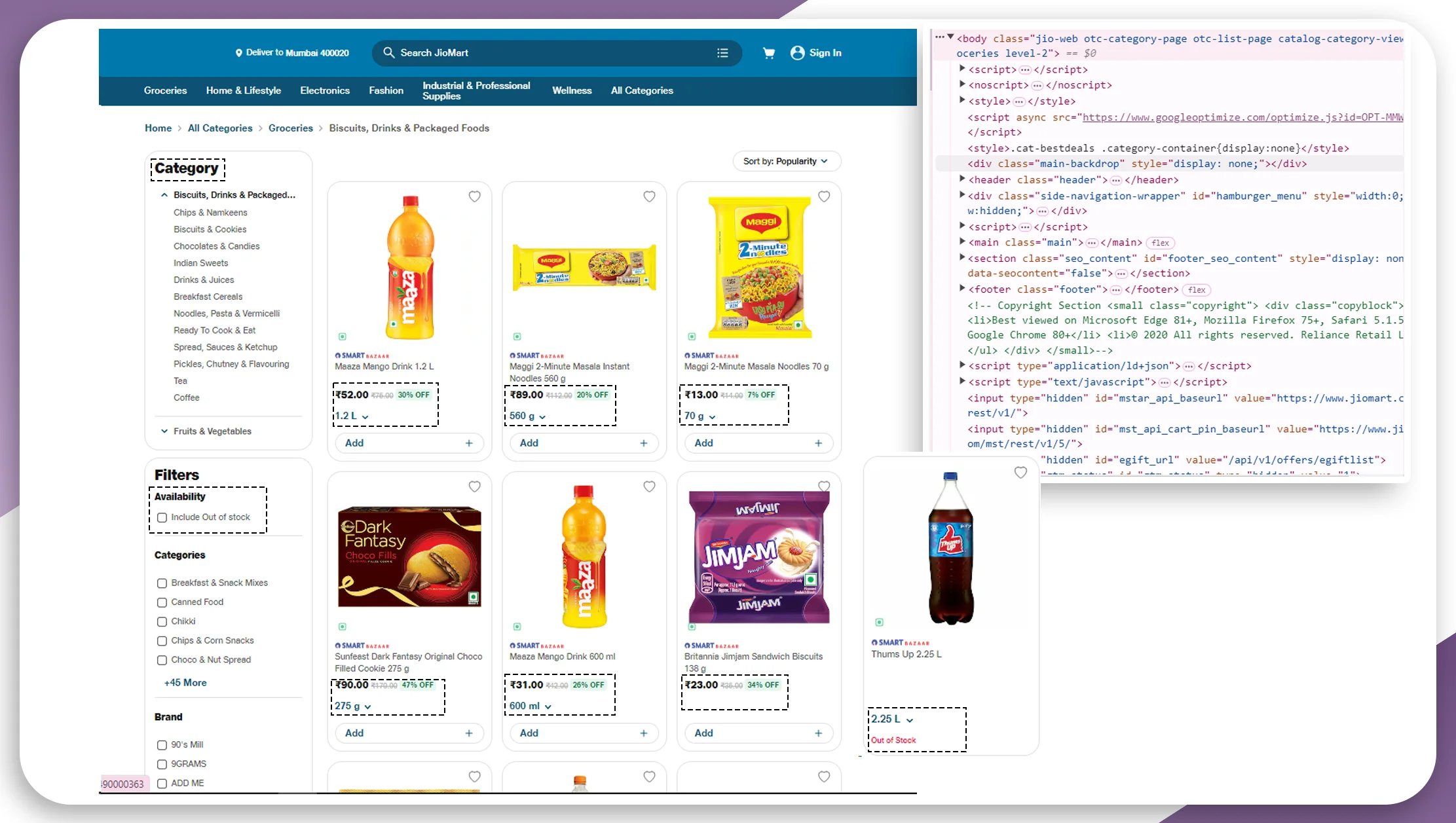
1. Price Monitoring and Competitive Analysis
One of the most common uses of extracting grocery data is price monitoring. Retailers and comparison platforms use grocery price scraping APIs to track real-time pricing across multiple competitors. This helps businesses understand price trends, spot opportunities for competitive pricing, and offer better deals to consumers.
Example: In 2024, a leading online grocery platform uses supermarket pricing data scraping APIs to track prices at over 50 stores daily. This allows the platform to adjust its prices dynamically based on competitors' offers, helping it retain its market share.
2. Inventory and Stock Availability Tracking
Retailers and consumers must keep up with stock availability across different stores. With grocery inventory scraping APIs, businesses can track out-of-stock products, monitor restock times, and adjust their supply chain accordingly.
Example: A significant grocery delivery company scraped grocery store APIs to check real-time inventory across supermarkets. This ensured that their platform only displayed items available for immediate delivery, significantly reducing customer complaints related to product availability.
3. Product Popularity and Consumer Trend Analysis
Using Grocery catalog scraping, businesses can track the rise and fall of product popularity. Knowing which items are trending allows retailers to promote those products more effectively. With the help of real-time grocery data scraping APIs, they can stay updated on consumer preferences.
Example: In 2024, a grocery chain noticed increased demand for plant-based products by scraping grocery web scraping APIs. They quickly adjusted their inventory and promotions, leading to a 25% boost in sales for that category.
4. Tracking Seasonal and Regional Variations
One key to success in the grocery industry is understanding regional and seasonal variations. For example, products like pumpkins or cranberries may increase demand in specific seasons or regions. Businesses can use grocery data scraping APIs to identify these trends and stock products accordingly.
Example: A regional grocery chain used retail data scraping APIs to analyze how demand for certain products changed during different seasons. This allowed them to adjust their inventory and reduce waste while maximizing profits during peak seasons.
5. Analyzing Delivery Patterns and Consumer Preferences
With the rise of online grocery delivery platforms, scraping grocery delivery data has become essential for understanding how products are purchased and delivered. Analyzing this data helps businesses optimize delivery routes, improve customer service, and refine their product offerings based on location.
Example: An online grocery delivery service in the U.S. used grocery delivery data scraping to analyze which products were most prevalent in urban vs. suburban areas. This allowed them to offer personalized deals and improve delivery efficiency by optimizing routes based on product demand.
How to Scrape Grocery Data: Tools and Techniques
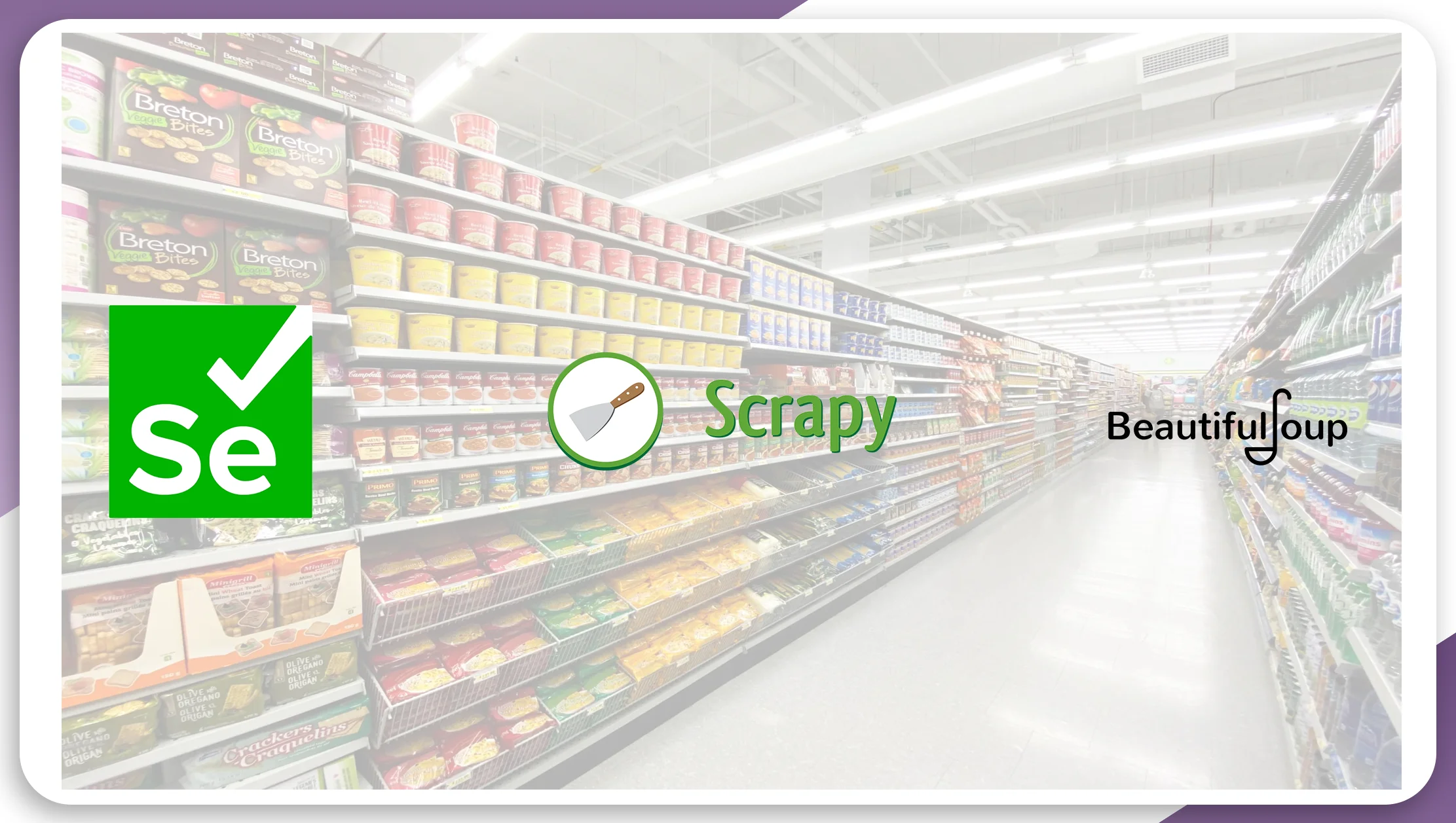
1. APIs for Grocery Data Scraping
Many grocery platforms now offer APIs that allow businesses to access real-time data on prices, inventory, and product catalogs. Grocery data extraction APIs are designed for developers to easily pull large volumes of data from multiple stores and platforms.
Examples of APIs for Grocery Data Scraping:
• You can scrape grocery store APIs to access multiple supermarket inventories.
• Grocery product scraping APIs are used to gather detailed product descriptions and pricing.
2. Web Scraping Tools
For platforms without official APIs, web scraping grocery websites can be an effective way to collect data. Tools like BeautifulSoup, Scrapy, and Selenium allow developers to scrape grocery websites and extract meaningful information like product names, prices, and availability.
3. Real-time Scraping and Data Integration
Real-time grocery data scraping APIs allow businesses to gather the most up-to-date information possible. This real-time data can be integrated into a company’s analytics platforms, giving them immediate access to crucial insights. With the help of Grocery API scraping, businesses can monitor trends as they happen.
The Future of Grocery Data Scraping in 2024
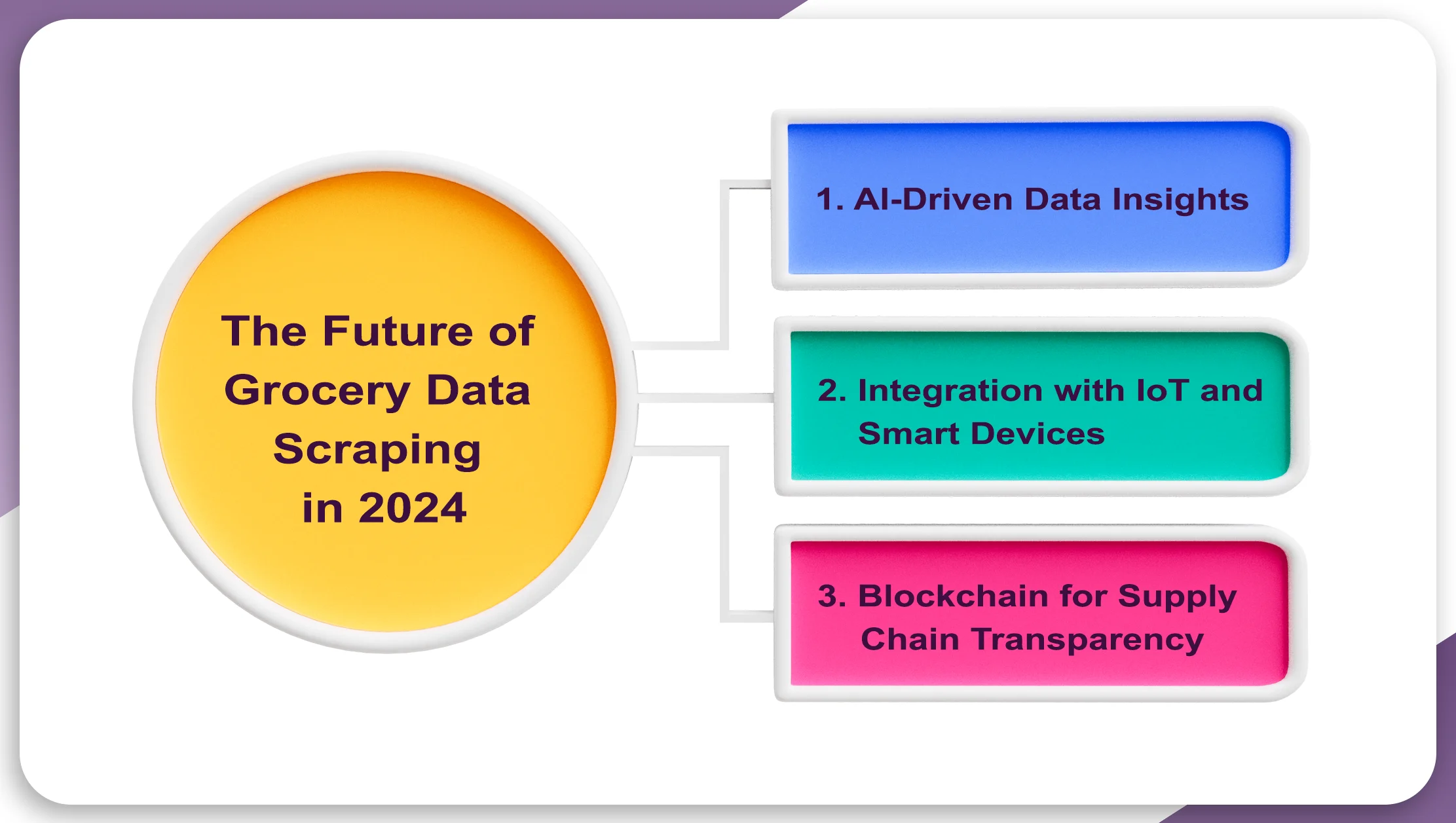
1. AI-Driven Data Insights
As artificial intelligence advances, combining AI and grocery data scraping will open new doors for predictive analytics. Companies will scrape data and analyze it in real-time to predict market shifts and adjust their strategies before trends become mainstream.
Example: An AI-powered platform uses real-time grocery data scraping APIs to predict price changes for fresh produce. It adjusts product recommendations and promotions to drive consumer purchases before prices rise.
2. Integration with IoT and Smart Devices
With the growing use of IoT in retail, data scraping will become more integrated with smart devices. Smart refrigerators, shopping carts, and even personal assistants will rely on grocery data scraping APIs to offer personalized recommendations based on real-time inventory and pricing data.
3. Blockchain for Supply Chain Transparency
Blockchain technology is gaining traction in the grocery industry to enhance supply chain transparency. By combining blockchain with web scraping grocery data, companies can offer consumers more detailed insights into the journey of their products, from farm to table.
Conclusion
As we move into 2024, the importance of tracking grocery product trends through web scraping grocery data must be balanced. Whether for price monitoring, inventory management, or understanding consumer behavior, businesses that leverage Grocery API scraping will have a significant advantage in the competitive grocery market.
With real-time data insights, companies can make smarter decisions, reduce waste, and improve profitability. As technologies like AI and IoT continue to advance, the future of grocery data scraping looks more promising than ever, with endless opportunities for innovation and growth.
In a world where data is king, staying ahead of product trends through web scraping grocery data is no longer an option—it’s a necessity.
Unlock the power of grocery data with Real Data API! Get ahead by leveraging cutting-edge Grocery API scraping solutions and gain real-time insights into product trends, prices, and consumer behaviors. Contact Real Data API today and let us help your business thrive in the dynamic world of grocery retail!













